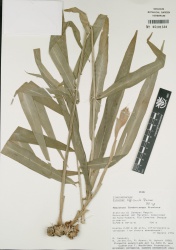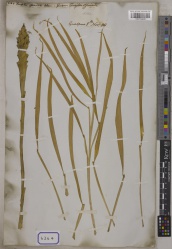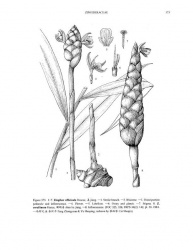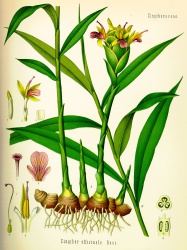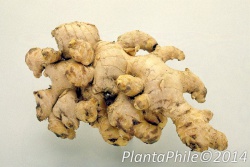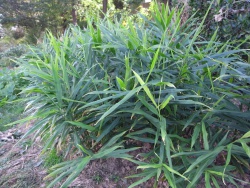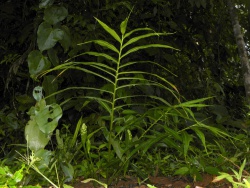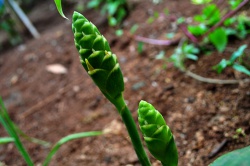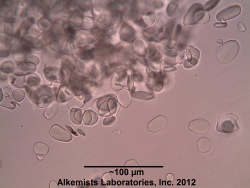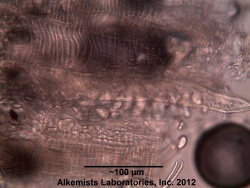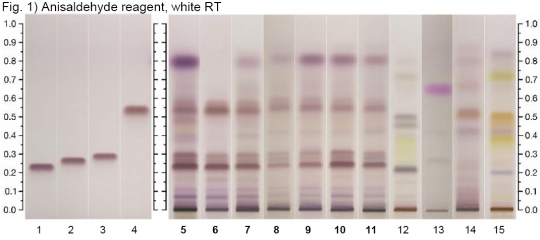Zingiber officinale (rhizome)
(add USD 1918 information (organoleptic, macro, micro)) |
(add Kew voucher specimen reference) |
||
| Line 13: | Line 13: | ||
=Botanical Voucher Specimen= | =Botanical Voucher Specimen= | ||
| − | {{ | + | {{Media2 | cat=Voucher |
| source=MOBOT, Tropicos.org | | source=MOBOT, Tropicos.org | ||
| Line 21: | Line 21: | ||
| reference=Tropicos.org. Missouri Botanical Garden. 26 Mar 2014 <http://www.tropicos.org/Image/36467> | | reference=Tropicos.org. Missouri Botanical Garden. 26 Mar 2014 <http://www.tropicos.org/Image/36467> | ||
| + | | companyimage2=Kewlogo.gif | ||
| + | | companyURL2=http://specimens.kew.org/herbarium/K001124208 | ||
| + | | image2=Zingiber officinale Kew barcode=K001124208 706423.jpg | ||
| + | | source2=Royal Botanic Gardens, Kew. | ||
| }} | | }} | ||
Latest revision as of 18:58, 26 May 2015
Contents |
Nomenclature
Zingiber officinale Roscoe Zingiberaceae
Standardized common name (English): ginger
Ayurvedic name(s): ardraka (fresh rhizome); shunthi (dried rhizome)
Pinyin name(s): jiang; sheng jiang (fresh rhizome); gan jiang (dried rhizome); pao jiang (prepared rhizome); jiang pi (peel)
Botanical Voucher Specimen
 |
|
|
|
|
Organoleptic Characteristics
|
Macroscopic Characteristics
|
Microscopic Characteristics
|
High Performance Thin Layer Chromatographic Identification
|
Ginger (rhizome) (Zingiber officinale) Lane Assignments Lanes, from left to right (Track, Volume, Sample):
Reference Sample(s) Reference: Individually dissolve 0.5 mg each of 6-gingerol and 6-shogaol in 1 mL of methanol. Optional: individually dissolve 0.5 mg each of 8-gingerol and 10-gingerol in 1 mL of methanol. Stationary Phase Stationary phase, i.e. Silica gel 60, F254 Mobile Phase Ethyl acetate, formic acid, water 88:6:6 (v/v/v) Sample Preparation Method Sample: Mix 1 g of powdered sample with 10 mL of methanol and sonicate for 10 minutes, then centrifuge or filter the solutions and use the supernatants / filtrates as test solutions. Derivatization reagent: Anisaldehyde reagent Preparation: 170 mL of ice-cooled methanol are mixed with 20 mL of acetic acid, 10 mL of sulfuric acid, and 1 mL of anisaldehyde. Use: Dip (time 0, speed 5), heat at 100C for 3 min. Detection Method Saturated chamber; developing distance 70 mm from lower edge; relative humidity 33% Reference see USP Dietary Supplements Compendium 2009-2010 (for additional documentation) Other Notes Images presented in this entry are examples and are not intended to be used as basis for setting specifications for quality control purposes. System suitability test: 6-Gingerol: violet zone at Rf ~ 0.24 6-Shogaol: violet zone at Rf ~ 0.53 Identification: Compare result with reference images. The fingerprint of the test solution is similar to that of the corresponding botanical reference sample. Additional weak zones may be present. Under white light the chromatogram of the test solution shows three violet zones at Rf ~ 0.24, Rf ~ 0.27, and Rf ~ 0.29 corresponding to reference substance 6-gingerol, 8-gingerol and 10-gingerol. A violet zone at Rf ~0.53 corresponding to 6-shogaol is present. Below the zone due to 6-gingerol there are several weak violet zones. Between 10-gingerol and 6-shogaol other weak zones are visible. A violet zone at Rf ~ 0.80 may be present. Test for adulteration: Under UV 366 nm no green or blue fluorescent zones are seen at Rf ~ 0.22 and 0.34 (Lesser galangal rhizome). No green fluorescent zone is seen at Rf ~ 0.51 (Sharp-leaf galangal fruit). No green or reddish fluorescent zones are seen at Rf ~ 0.07 and 0.20 (Katsumada galangal semen (Alpinia katsumadai)). Under white light no pink zone is seen at Rf ~ 0.64 (Kaempferia galangal rhizome). Source: HPTLC Association [14] |
Supplementary Information
Sources
- ↑ MOBOT, Tropicos.org http://www.tropicos.org/Image/36467
- ↑ Royal Botanic Gardens, Kew. http://specimens.kew.org/herbarium/K001124208
- ↑ United States Dispensatory (1918)
- ↑ United States Dispensatory (1918)
- ↑ MOBOT, Tropicos.org http://www.tropicos.org/Image/36460
- ↑ Köhler, Medizinal-Pflanzen in naturgetreuen Abbildungen und kurzerläuterndemTexte (1887) http://caliban.mpiz-koeln.mpg.de/koehler/INGWER.jpg
- ↑ PlantaPhile http://plantaphile.com/
- ↑ WikiMedia Commons (Dalgial) http://commons.wikimedia.org/wiki/File:Zingiber_officinale.JPG
- ↑ Encyclopedia of Life http://eol.org/data_objects/24891510 http://eol.org/data_objects/24891510
- ↑ WikiMedia Commons (Venkatx5) http://commons.wikimedia.org/wiki/File:Ginger_Flower_vs.jpg
- ↑ United States Dispensatory (1918)
- ↑ Elan M. Sudberg, Alkemist Laboratories http://www.alkemist.com
- ↑ Elan M. Sudberg, Alkemist Laboratories http://www.alkemist.com
- ↑ HPTLC Association http://www.hptlc-association.org/
- Botanical
- Zingiberaceae
- Media
- Voucher
- MOBOT, Tropicos.org
- Royal Botanic Gardens, Kew.
- Organolepsy
- United States Dispensatory (1918)
- Macroscopy
- Köhler, Medizinal-Pflanzen in naturgetreuen Abbildungen und kurzerläuterndemTexte (1887)
- PlantaPhile
- WikiMedia Commons (Dalgial)
- Encyclopedia of Life http://eol.org/data objects/24891510
- WikiMedia Commons (Venkatx5)
- Microscopy
- Elan M. Sudberg, Alkemist Laboratories
- HPTLC
- HPTLC Association
